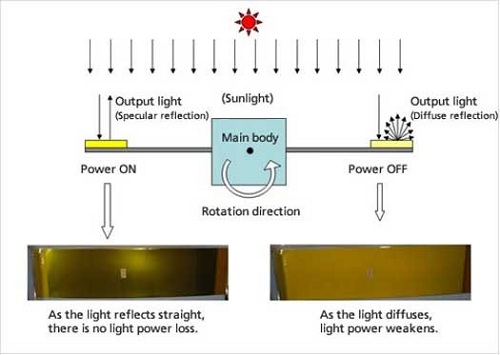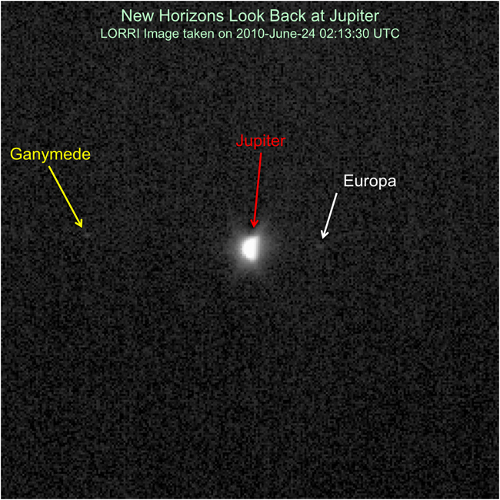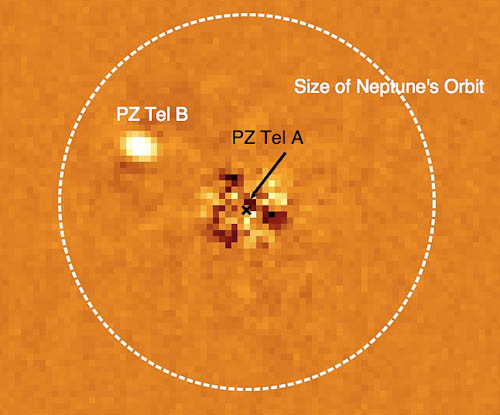Centauri Dreams
Imagining and Planning Interstellar Exploration
Solar Sails: Charting an Operational Future
Japan’s IKAROS sail has thus far conducted a triumphant mission, demonstrating the principles of sail deployment, solar photon propulsion and attitude control in a functioning space sail. While the solar sail community has never received the press attention I believe this innovative propulsion technology deserves, it’s heartening to realize that a long and sustained effort, even one operating under the radar, so to speak, can produce such striking results.
The 2nd International Symposium on Solar Sailing (ISSS 2010) has just wrapped up in Brooklyn, but if you go back to the first of these conferences, conducted in June of 2007 in Ammersee, Germany, you’ll find that the program was laced with representatives of ESA, NASA and JAXA (presentations from that meeting are available online), attacking the issue of getting a solar sail operational from every angle even as the budgets of the representative agencies were being cut back. The needed theoretical work proceeds absent the necessary funding. We can hope the success of IKAROS will pry money loose from NASA and ESA to add to the operational sail experiments JAXA has so notably begun.
The New York Declaration of ISSS 2010 points explicitly to IKAROS in saying:
The international experts, who gathered at the 2nd ISSS, unanimously agree that Solar Sail technology has significantly advanced in its Technology Readiness since the first symposium held in Ammersee, Germany (2007).
It has been confirmed by flight testing in deep space that Solar Sail technology is viable for space flight operations.
Many important applications of solar sails have been identified as useful to the international science community. It is vital that this user community be engaged as soon as possible so that they may better understand the capabilities offered by solar sail technology and to thereby obtain their advocacy.
The main statements and recommendations of the Ammersee Resolution of 2007 are still valid and are confirmed by the experts.
I can’t put my hands on a copy of the Ammersee Resolution but will link to it as soon as I can track it down. What’s ahead in near-term sail development? The declaration notes the continuing evaluation of IKAROS flight data, but also points to a number of sail systems now in the works:
- The Planetary Society’s Lightsail-1
- NASA’s NanoSail-D2
- The University of Surrey’s CubeSail and DEORBITSAIL
- CU Aerospace’s Cubesail
- Deutsches Zentrum fur Luft-und Raumfahrt/European Space Agency’s Gossamer-1
- Air Force Research Laboratory’s FURL
Several of these designs, particularly Lightsail-1 and NanoSail-D, are already familiar to Centauri Dreams readers, but I’ll be posting information on the other missions as they develop.
But back to IKAROS, whose controllers have demonstrated successful attitude control of the sail using ultra-thin LCD panel devices built into the edges of the sail material. By operating the panels independently, the reflectivity of various parts of the craft can be adjusted, with accompanying changes in light pressure on the sail, as is shown in the diagram below (credit: JAXA):

This is handy stuff, because the name of the game for solar sailing is to use little or no propellant, letting the solar photons do the necessary work. The liquid crystal units JAXA has built into IKAROS fill the bill, offering a valuable alternative to the onboard thrusters also available, and pointing the way to future sail designs. Synchronizing the LCD blocks with the spin cycle of the sail allows controllers to fine-tune the sail’s attitude, with results JAXA says have “…achieved the expected control performance of more than 90% of the expected attitude control angle…”
All of this is heartening news and we can hope that continued success for IKAROS will intrigue the public in ways of getting around the solar system that do not involve chemical propellants. We’re at the small demonstrator sail stage right now as we shake out the needed technologies, but much larger operational sails for inner system missions are in our future, and JAXA has already announced ambitious plans to refine the IKAROS concept into a Jupiter mission that will combine sail propulsion with an ion engine. Let’s hope The Planetary Society’s LightSail-1 gets off in not so many months to add a second space-based experiment to our mission catalog.

Oxygen & Wildfires: Clues to Early Life
How big can an insect get? One night a few years back, I opened the door onto our patio to let the dogs out and an enormous flying, buzzing thing came through the door. When I say ‘enormous,’ I simply mean it was big enough to startle both dogs enough that they ran upstairs, causing me to grab for a flyswatter as it flitted and hummed around the room. I lost sight of it and suddenly all was silent. Our cat had sprung, and the bug was quickly dispatched. We dubbed it ‘Mothra’ and added it to our dog lore. After all, where were our Border Collie and Sheltie when we needed them? Peering down at us from the upstairs landing, while the cat did the dirty work.

‘Mothra’ was probably no more than an inch long — he was noisier than he was big. But there was a time when ‘enormous’ really meant something. Meganeura is a genus of insects dating to the Carboniferous period when creatures related to our own familiar dragonfly boasted wingspans of two feet or more. Meganeura monyi is considered one of the largest flying insects ever, a creature that fed not only on other insects but also on small amphibians, and could probably have made off with a present-era cat. Sufficient reason to keep the screen door closed.
Image: An artist’s conception of Meganeura monyi. Good luck if one of these gets into your living room. Credit: Surface Vision.
Some people believe that gigantism in some animal groups was the result of higher levels of oxygen in the atmosphere, the consequence of the colonization of land by plants. And some would argue that higher amounts of oxygen allowed vertebrates to colonize land surfaces. Today we’ve got an oxygen level of 21 percent, but we know the levels have varied greatly in the past 400 million years and have declined steadily since the middle of the Cretaceous.
Studying this has been tricky because we use geochemical models to estimate the level of atmospheric oxygen, and various models produce differing results. But new work just published in Nature Geoscience now shows that the amount of charcoal preserved in ancient peat bogs provides a measure of how much oxygen was available in the past and may be the best way to measure the phenomenon. The variation is striking. Charcoal found in coal has remained at concentrations between 4-8 percent over the past 50 million years, indicating oxygen levels similar to today. But some earlier periods show a charcoal percentage as high as 70 percent.
That latter figure implies, according to Andrew Scott (Royal Holloway University of London) that high levels of atmospheric oxygen would have been available to spread frequent, large fires in both the Carboniferous and Permian periods, from 320-250 million years ago, and the Middle Cretaceous, approximately 100 million years ago. Says Scott: “It is interesting that these were times of major change in the evolution of vegetation on land with the evolution and spread of new plant groups, the conifers in the late Carboniferous and flowering plants in the Cretaceous.”

We may be dealing with a self-perpetuating mechanism: Frequent, hot fires resulting from high levels of atmospheric oxygen could have caused more erosion and thus greater burial of organic carbon, which creates a cycle keeping oxygen levels high. The burial of carbon was particularly high during the late Paleozoic, which is marked by the accumulation of huge coal deposits. Ian Glasspool (Field Museum, Chicago) notes the relationship between oxygen and flammability:
“Atmospheric oxygen concentration is strongly related to flammability. At levels below 15% wildfires could not have spread. However, at levels significantly above 25% even wet plants could have burned, while at levels around 30 to 35%, as have been proposed for the Late Paleozoic, wildfires would have been frequent and catastrophic”.
The mystery then becomes why oxygen levels stabilized in the last 50 million years. We have much to learn about the mechanisms promoting and regulating life on our own planet. How useful it will ultimately be to be able to compare what we find on other planets with our own history. The discovery of biomarkers in the atmosphere of an extraterrestrial world would be met with celebration, but it will also remind us how little we know about how those biomarkers change over time and the effect those changes have on indigenous life.
The paper is Glasspool & Scott, “Phanerozoic concentrations of atmospheric oxygen reconstructed from sedimentary charcoal,” Nature Geoscience, published online 1 August, 2010 (abstract).

Imaging Giants and Dwarfs
Was it really three years ago that New Horizons moved past Jupiter, returning images of its stunning systems of storms and cloud? The mission continues to go well, and the photo below, taken by the spacecraft’s Long Range Reconnaissance Imager (LORRI) paints an unusual portrait of Jupiter and two of its largest moons from a distance of more than 16 AU, looking back toward the inner system. Note how faint the moons are, the consequence of the fast shutter speed used, with an exposure time of 0.009 seconds. I like what mission principal investigator Alan Stern says:
“This haunting image of Jupiter – far in the distance back in the Sun’s warmer clines from whence New Horizons came – reminds us of Voyager’s family postcard of the planets taken from beyond Neptune’s orbit about 20 years ago. Perhaps after we flyby Pluto in 2015, we’ll try something similar from our perch aboard New Horizons.”

Image: The New Horizons team looked back at Jupiter during Annual Checkout (ACO) 4 to test the Long Range Reconnaissance Imager (LORRI)’s ability to image targets close, in angle, to the Sun. This image was taken on June 24, when New Horizons was 16.3 astronomical units (about 1.5 billion miles) from Jupiter, at a spacecraft-Sun-planet angle of only 17 degrees. Looking like Earth’s moon at a quarter phase, Jupiter is clearly resolved, with an apparent diameter of nearly 12 LORRI pixels. LORRI also picks up the moons Ganymede and Europa, even though the exposure time was only nine milliseconds and these Galilean satellites are extremely faint in comparison to Jupiter. Credit: NASA/Johns Hopkins University Applied Physics Laboratory/Southwest Research Institute.
Meanwhile, looking at gas giants from any angle reminds me of the progressive escalation from planet to brown dwarf to star, especially in light of the new find — a 36 Jupiter-mass companion — around the star PZ Tel A. The object is a brown dwarf separated by about 18 AU from the star, a distance similar to that between the Sun and Uranus. That’s a tight separation given that the brown dwarf was discovered through direct imaging, where orbital separations greater than 50 AU are the more likely outcome.
PZ Tel B is evidently on a highly eccentric orbit — Beth Biller (University of Hawaii), lead author on the paper on this work, says ‘in the last ten years, we have literally watched it careen through its inner solar system’ — and images as recent as seven years ago show it obscured by the glare of its primary, an indication it is moving outward quickly from the star. Its orbital motion has implications for the kinds of planets that can form in such a system.

Image: PZ Tel A and B. The vast majority of light from PZ Tel A has been removed from this image using specialized image analysis techniques. The size of the orbit of Neptune is shown for comparison; PZ Tel B would lie within Neptune’s orbital dimensions and is one of the few brown dwarfs or exoplanets imaged at a distance of < 30 AU from its parent star. Credit: Beth Biller and the Gemini NICI Planet-Finding Campaign, Gemini Observatory/AURA. PZ Tel A is a young, Sun-like star about twelve million years old, still surrounded by significant amounts of circumstellar dust. Sifting a brown dwarf out of its glare is remarkable work, using adaptive optics coupled to the Near-Infrared Coronagraphic Imager (NICI), which can detect companions a million times fainter than the host star at 1 arcsecond separations. The science fiction writers among us can now go to work imagining what a similar brown dwarf would be like in our own system, and how it might affect a nearby civilization's thoughts on expanding into space. More can be found in the paper, which is Biller et al., "The Gemini NICI Planet-Finding Campaign: Discovery of a Close Substellar Companion to the Young Debris Disk Star PZ Tel," slated for publication in Astrophysical Journal Letters and available as a preprint.

Can the Pioneer Anomaly Be Explained by Inertia Modification?
by Richard Obousy

Physicist Richard Obousy here takes a look at an intriguing new paper by Mike McCulloch, a researcher at Plymouth University. In addition to his work in theoretical physics and warp drive possibilities, Obousy is current project leader and primary propulsion design lead for Project Icarus, a joint venture between the British Interplanetary Society and the Tau Zero Foundation to re-think the original Project Daedalus starship design. In the review below, Obousy places McCulloch’s work on the Pioneer anomaly in the context of current thinking on dark matter, dark energy and the nature of mass. Does the Higgs field explain inertial mass, or are there alternatives? Read on.
Few areas of research have garnered as much attention from both the public and scientific communities as those of dark energy and dark matter – and for good reason. Both terms stem from observations of the physical universe that, simply put, don’t belong within the well-understood framework of known physics. Another phenomenon discovered in the nineties concerns an anomalous acceleration of the Pioneer probes. These ostensibly unrelated observations may, in fact, be connected to each other by an intriguing line of research currently being investigated by Mike McCulloch, a researcher at the University of Exeter. Before exploring McCulloch’s research, a brief review of dark energy, dark matter, and the anomalous Pioneer acceleration will be presented.
Dark matter is a proposal put forward to explain the observations first made by Zwicky in 1933 that galaxies were too energetic to be held together by observable matter. Zwicky originally proposed the existence of an unseen form of baryonic matter that provided the necessary gravitational force to hold the galaxies together. Due to constraints imposed by modern cosmology, the idea has evolved to assume this form of matter is non-baryonic (not made of quarks); however, the fundamental idea has remained unchanged. After decades of searching for dark matter, none has been directly detected, but a number of experiments are ongoing.
Dark energy stems from the truly astounding observation made originally by Riese and Perlmutter in the late 90’s that the rate of cosmological expansion, long thought to be either static or decelerating, is actually accelerating. For this to be happening, it is commonly believed that the universe is filled with a ubiquitous and exotic negative pressure field that drives the accelerated expansion. Although we can give this energy a name, and predict what it will do, dark energy as a ‘real’ physical field has never actually been measured in the lab, and today, dark energy remains somewhat of an enigma.
As if dark energy and dark matter haven’t dealt theoreticians enough of a blow, cracks began to appear in our understanding of gravity due to the observation made by Anderson et al in 1996 that both Pioneer 10 and 11 are experiencing an anomalous acceleration of 8.74±1.33×10-10 m/s2 directed approximately towards the sun. It is precisely this anomaly that is studied by Mike McCulloch in his recent publication in Europhysics Letters called Minimum Accelerations from Quantized Inertia (reference below). McCulloch’s work addresses the Pioneer anomaly, and within the framework of his model, one could perhaps come to a deeper understanding of dark matter and dark energy thanks to a novel idea known as MOND, or Modified Newtonian Gravity.
The basic idea that McCulloch explores is the nature of mass, and the possibility that inertial mass, in fact, changes slightly under certain conditions. It has been known since the time of Newton that all bodies attract all other bodies in the universe with a force that is proportional to their mass. This type of mass is what is known as gravitational mass. It is also known that when one applies a force to an object, it accelerates at a magnitude that is proportional to its mass. This type of mass is known as inertial mass. It is commonly assumed that gravitational and inertial mass are identical, and this has been verified by our highest precision instruments to date.
The fundamental nature of inertial mass is not precisely known and is an issue that has been pondered at least since the time of Mach. Recent efforts to codify inertial mass into the Standard Model (SM) of particle physics have resulted in the famous Higgs field, which is a ubiquitous field that bestows mass upon matter via a process known as spontaneous symmetry breaking. Although the Higgs field has not been experimentally detected, many physicists are confident that it will be found at the Large Hadron Collider.
Despite the widespread acceptance in the existence of the Higgs field, there have been alternative attempts to uncover the nature of inertial mass. One paper, Inertia as a Zero Point Lorentz Force, written in 1994 by Rueda, Puthoff and Haisch (RPH), represents a stalwart effort to model inertia as a back-reaction of matter to the quantum vacuum similar to the Unruh field. Despite not gaining widespread acceptance in the theoretical community, the paper galvanized interest in the possibility that the quantum vacuum and inertial mass may be related. The basic premise of the paper was that matter, modeled as a ‘Parton’, interacts with the quantum vacuum in such a way that any acceleration generates a Lorentz-type back-reaction to the vacuum which manifests itself macroscopically as a resistance to acceleration or, more simply, as inertial mass.
The RPH paper was not the first to suggest that accelerated matter is effected by the quantum vacuum. In 1976, Unruh showed that a body undergoing an acceleration in the vacuum sees a thermal radiation of temperature T that is related to its acceleration. Wien’s displacement law tells us that, for a given temperature, there will be a dominant wavelength which, via the Unruh effect, is inversely proportional to the acceleration – namely, as the acceleration gets smaller, the radiation wavelength gets bigger. As the acceleration decreases, this wavelength reaches a limiting value: the wavelength of the observable universe. Milgrom, in 1994, speculated that at this point, there would be a ‘break in the response to the vacuum’ and the Unruh radiation would be unobservable. He further speculated that this could have an effect on inertial mass. Herein lies the crux of this line of thinking – that matter’s response to the vacuum is what generates inertia.
McCulloch further develops the idea of Milgrom by allowing for a more natural development in the Unruh radiation spectrum. In the original idea by Milgrom, only the dominant wavelength was considered. McCulloch, however, develops what he calls a Hubble-Scale Casimir effect, where a range of wavelengths are allowed based on the boundary conditions of the size of the observable universe.
“The new assumption is that this Unruh radiation is subject to a Hubble-scale Casimir effect. This means that only Unruh wavelengths that fit exactly into twice the Hubble scale (harmonics with nodes at the boundaries) are allowed, so that a greater proportion of longer Unruh waves are disallowed, reducing inertia in a new, more gradual, way for low accelerations.”
Using this model, McCulloch is able to develop an equation which illustrates the modification of inertial mass for low accelerations. Put in simpler terms, as the Pioneer probes depart our solar system they experience a force due to the gravitational attraction of the sun. This force generates an acceleration which, due to its extremely small value, modifies the inertial mass of the pioneer probe. Because of this modification, the Pioneer probes, seemingly now less massive, feel a greater acceleration due to the sun than that predicted by Newtonian mechanics, creating the anomalously large acceleration.
How does this all relate to dark energy and dark matter? The answer is in the relationship between certain natural scales that occur in physics. The basic building block is the scale that characterizes the cosmological constant. We call this scale R and it is the distance scale over which the cosmological constant curves the universe. R is about 10 billion light years and is 1040 times the size of an atomic nucleus – the scale where the standard model of particle physics is applicable). R is also 1060 times the Planck scale – the scale at which we believe in GUT’s (Grand Unified Theories), where all the forces in nature behave identically. It is therefore pragmatic to wonder whether this scale R might be indicative of some new physics.
Hints at new physics at the scale R manifest themselves in the cosmic microwave background (CMB) – thermal radiation left over from the Big Bang. This radiation has been cooling as the universe expands, and is now at a fairly uniform temperature of 2.7 degrees Kelvin. Fluctuations in this temperature exist to a level of a few parts per 100,000, and the patterns of these fluctuations provide us with clues to the physics of the early universe.
Analysis of the temperature fluctuations over the last decades illustrate how much energy is contained in this radiation as a function of wavelength. It appears that the CMB is dominated by a single large peak, followed by a number of smaller peaks. It also appears that there is very little energy in the longest wavelength. This data can be interpreted as indicative of a ‘cutoff’, above which the thermal modes are less excited. What is particularly remarkable is that this cutoff occurs on a scale R which we associate with the cosmological constant.
This cutoff is somewhat puzzling from the perspective of inflation theory, which was developed by Alan Guth of MIT and, originally, by Alexei Starobinsky of the Landau Institute for Theoretical Physics in Moscow. According to the theory of inflation, the early and rapid expansion of the universe created huge regions of the cosmos with relatively uniform properties. This region is thought to be much larger than the observable universe. The cutoff indicates that, at the scale R, inflation stopped just at the point where it created a region as large as we now currently observe. If, in fact, inflation ‘switched off’ just at the point where it created the cosmos as large as we currently observe, then some physical mechanism must have been responsible for selecting this unique time to stop. This seems incredibly improbable, since nothing in the physics of inflation says anything about scales on the order of 10 billion light years.
Said another way, if inflation produced a largely uniform universe, then it likely produced uniformity on scales much larger than we observe. Thus, the patterns produced by inflation, the small fluctuations, should be visible beyond the present size of the universe. Instead – what the data indicate is that these fluctuations stop above the scale R.
Another indication that new physics may occur at scales on the order of R is an apparent asymmetry in the distribution of hot and cold spots in the CMB dubbed the ‘Axis of Evil’. This observation was first made in 2005 by Kate Land and Joao Magueijo of Imperial College London. A number of independent studies have confirmed this apparent alignment of anisotropies in the CMB.
There are additional phenomena associated with the scale R that are worth discussing. One way we can explore R is to combine it with additional constants of nature. An interesting place to start is to combine it with the speed of light, c, to give us R/c. Dimensionally, R/c gives us a time, and that time corresponds to the present age of the universe. Taking the reciprocal of this, c/R, gives a frequency, a profoundly low ‘note’ which has completed one oscillation in the entire lifetime of the universe.
Going one step further, we can explore c2/R which, dimensionally, gives us the units of acceleration. Remarkably, this number is the acceleration produced by the cosmological constant. This is the same acceleration that we currently believe dark energy is responsible for and is on the order of 10-10 m/s. This also happens to be the roughly the same anomalous acceleration that the Pioneer probes are currently experiencing!
The c2/R also crops up when we examine rotational velocity of orbiting stars in galaxies. Recall that stars are seen to rotate at a velocity that would, according to Newtonian Mechanics, be too fast for them to be held in a stable orbit. The contemporary fix for this problem is to introduce dark matter. This is not the only fix, however. For spiral galaxies, in which stars move in circular orbits, anomalous velocities (orbital velocities that, according to Newtonian Mechanics, should not be possible) are only apparent beyond a certain orbit. Within this ‘special’ orbital distance Newtonian gravity works perfectly. Because stars move in a circular orbit they experience an angular acceleration which is related to their velocity (a=v2/r). The breakdown of Newtonian gravity occurring at this ‘special’ orbital distance occurs when the stars are rotating with an angular acceleration of 1.2×10-10 m/s2, almost identical to the scale c2/R. This is thoroughly fascinating, and this string of relationships which appear to be related to the scale R represent tantalizing hints at physics beyond what is currently studied and practiced within the mainstream academic community.
Today, nobody knows for certain what this new physics is (if it really is new physics), and nobody has written down a theory codifying its behavior. Mike McCulloch, however, is arguably helping to increase momentum within this curious and remarkable area of research.
The paper is McCulloch, “Minimum accelerations from quantised inertia,” Europhysics Letters Vol. 90, No. 2 (20 May, 2010). An abstract is available, with full text here. The paper by Rueda, Haisch and Puthoff is “Inertia as a Zero Point Lorentz Force,” Physical Review A, Vol 49, No 2 (February 1994), pp.678-694.

Statites: Hovering Over the Pole
Robert Forward’s Indistinguishable from Magic is a genial and absorbing read, a collection of essays and fiction illustrating some of the scientist’s most memorable ideas. And while gigantic lightsails driven by laser beam to other stars always come to mind when Forward’s name is mentioned, it’s fascinating to page through his thoughts on antimatter, black holes and time machines. Long a Forward admirer, I was pleased to see that another of the concepts discussed in this book recently made an appearance at this month’s solar sail conference in Brooklyn.
‘Statites’ are a Forward construct, a word he coined to describe a spacecraft that uses a solar sail to hover over a region rather than orbiting the Earth. Let Forward describe what he calls a ‘technique for hanging things in the sky’:
…I have the patent on it — U.S. Patent 5,183,225 “Statite: Spacecraft That Utilizes Light Pressure and Method of Use”… The unique concept described in the patent is to attach a television broadcast or weather surveillance spacecraft to a large highly reflective lightsail, and place the spacecraft over the polar regions of the Earth with the sail tilted so the light pressure from the sunlight reflecting off the lightsail is exactly equal and opposite to the gravity pull of the Earth.
You can see where Forward is going with this. This is a solar sail that isn’t designed for transport but for station-keeping, and it offers options that other kinds of satellite do not. But maybe satellite is the wrong word:
With the gravity pull nullified, the spacecraft will just hover over the polar region, while the Earth spins around underneath it. Since the spacecraft is not in orbit around the Earth, it is technically not a satellite, so I coined the generic term ‘statite’ or ‘-stat’ to describe any sort of non-orbiting spacecraft (such as a ‘weatherstat’ or ‘videostat’ or ‘datastat’).
Forward always noted that he had made no money from his patent, but said he didn’t want to make the mistake Arthur C. Clarke did when he failed to obtain a patent on his idea of the geosynchronous communications satellite. In a short story included in Indistinguishable from Magic called ‘Race to the Pole,’ Forward writes about a statite called the ‘Hovering Hawke’ that uses a kilometers wide square lightsail to support a powerful broadcast satellite. Such a ‘polesitter’ would, by Forward’s calculations, need to be too distant to serve as a communications satellite, but direct broadcast or weather surveillance would be robust applications.
Just how distant would a polesitter have to be? In this passage from the story, a scientist explains the difficulty a statite would experience maintaining a stable position as the Earth’s seasons change:
“The control problem of keeping the [statite] balanced over the pole is very tricky, especially during the summer season of that hemisphere when the polar axis is over on the sunlit side of the Earth. That’s why ‘pole-sitters’ have to be placed so far away from the Earth. If they get any closer than 250 Earth radii, they become unstable during the summer.”

Forward’s patent ran out in February of this year, but his idea is beginning to gain traction. At the Second International Symposium on Solar Sailing, which ended just last week, Matteo Ceriotti reported on work with Colin McInnes describing what Forward called ‘displaced orbits’ that would allow geosynchronous telecommunications satellites to be deployed to the north or south of the Earth’s equator. Working with graduate student Shahid Baig, McInnes (University of Strathclyde) has published a new paper that shows the viability of displaced orbits. Says McInnes:
“Satellites generally follow Keplerian Orbits, named after Johannes Kepler – the scientist who helped us understand orbital motion 400 years ago. Once it’s launched, an unpowered satellite will ‘glide’ along a natural Keplerian orbit. However, we have devised families of closed, non-Keplerian orbits, which do not obey the usual laws of orbital motion. Families of these orbits circle the Earth every 24 hours, but are displaced north or south of the Earth’s equator. The pressure from sunlight reflecting off a solar sail can push the satellite above or below geostationary orbit, while also displacing the centre of the orbit behind the Earth slightly, away from the Sun.”
Image: Analog‘s December, 1990 issue contained an article by Robert Forward describing the ‘polesitter’ concept, one of many innovative ideas the scientist introduced to a broad audience. Credit: Condé Nast.
No, we’re not in ‘polesitter’ range, not yet, anyway. But these displaced orbits would allow solar sails — McInnes is interested in hybrid sails complemented by electric propulsion systems — to be displaced between 10 and 50 kilometers from the equator. As we continue our work with solar sails, finding ways to make them robust enough to handle polar stationary orbits seems like a reasonable expectation. Another Forward concept thus moves into sharper definition. I can only imagine how much the late Dr. Forward would have enjoyed sitting in on the relevant session at the solar sail conference, and reading the McInnes paper.
The paper is Baig and McInnes, “Light-Levitated Geostationary Cylindrical Orbits are Feasible,” Journal of Guidance, Control and Dynamics, Vol. 33, No. 3 (2010), pp. 782-793 (preprint). You’ll also enjoy reading the non-fiction piece Robert Forward wrote for Analog. It’s “Polesitters,” published in Analog Science Fiction/Science Fact Vol. 110, No. 13 (December, 1990), pp. 88-94.

New Planets Highlight Orbital Resonance
We’re learning a lot more about how planets interact with each other gravitationally. ‘Resonance’ is the operative term here. When planets are locked in a 2:1 orbital resonance, the outer planet orbits the host star once for every two orbits of the inner planet. A 3:2 resonance occurs when the outer planet orbits the star twice for every three orbits of the inner planet.
Resonance (technically ‘mean motion resonance’) prevents close encounters between planets and provides long-term orbital stability. And if the 2:1 resonance is the most common pattern, it’s also true that things can change when planets migrate to different parts of their system. John Johnson (Caltech) describes the result of fast inner migration:
“Planets tend to get stuck in the 2:1. It’s like a really big pothole. But if a planet is moving very fast it can pass over a 2:1. As it moves in closer, the next step is a 5:3, then a 3:2, and then a 4:3.”
Johnson’s work on resonance has born fruit in a new paper in which he and his colleagues discuss the discovery of two solar systems where gas giants in relative proximity to each other have become locked into resonance. Studying the matter helps us understand how solar systems evolve, as planets farther out in the protoplanetary disk migrate inwards, causing gravitational disturbances that can only become stable in orbital resonance.
Studying the star 24 Sextantis, some 244 light years from Earth, using radial velocity methods, the researchers have found two gas giants separated by about 0.75 AU, roughly 113 million kilometers. You can contrast this with the spacing between the largest planets in our system. Jupiter and Saturn are never closer than 531 million kilometers. The planets orbit the star with periods of 455 days and 910 days and are locked in a 2:1 orbital resonance.
A second gas giant pairing occurs around the star HD 200964, some 223 light years from Earth. Here the distance between the two gas giants can close to 0.35 AU (53 million kilometers). Johnson likens the latter pairing to that of Titan and Hyperion, two Saturnian moons, which also show a 4:3 resonance, but notes that the planets orbiting HD 200964 interact far more strongly, each being 20,000 times more massive than the combined mass of Titan and Hyperion. The planets in this system have orbital periods of 630 and 830 days respectively. Johnson adds:
“This is the tightest system that’s ever been discovered, and we’re at a loss to explain why this happened. This is the latest in a long line of strange discoveries about extrasolar planets, and it shows that exoplanets continuously have this ability to surprise us. Each time we think we can explain them, something else comes along.”
Gravitational interactions in this environment are quite powerful. This Caltech news release notes that the gravitational tug between HD 200964’s two planets is 3 million times greater than the gravitational force between Earth and Mars, 700 times larger than that between the Earth and the Moon, and 4 times larger than the pull of the Sun on the Earth.
As to the history of these worlds, the paper on this work notes their current positions and their likely changes over time:
In both the 24 Sex and HD 200964 systems, the planets reside well within the so-called snow line, beyond which volatiles in the protoplanetary disk can condense to provide the raw materials for protoplanetary core growth. For a pre-main-sequence, 1.5 M [solar mass] star the snow line is located beyond 2-3 AU… It is therefore likely that the planets around 24 Sex and HD 200964 formed at larger semimajor axes and subsequently experienced inward orbital migration.
Both of these stars are massive and dying, subgiants that have evolved off the main sequence and have run out of hydrogen for nuclear fusion. The eventual fate of such stars is to become a red giant, but neither of the stars has progressed that far. While red giants are problematic for radial velocity methods because their pulsations mask the spectral shifts that would reveal orbiting planets, subgiants have not expanded to that point and planet hunting remains possible. In fact, using the Keck Subgiants Planet Survey, Johnson and team are learning a great deal about such systems:
“Right now, we’re monitoring 450 of these massive stars, and we are finding swarms of planets. Around these stars, we are seeing three to four times more planets out to a distance of about 3 AU — the distance of our asteroid belt — than we see around main-sequence stars. Stellar mass has a huge influence on frequency of planet occurrence, because the amount of raw material available to build planets scales with the mass of the star.”
The paper is Johnson et al., “Retired A Stars and Their Companions VI. A Pair of Interacting Exoplanet Pairs Around the Subgiants 24 Sextan[t]is and HD 200964,” accepted for publication in The Astronomical Journal (abstract).



